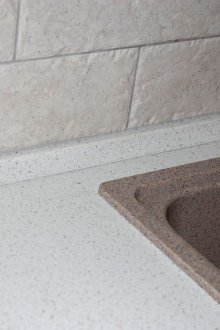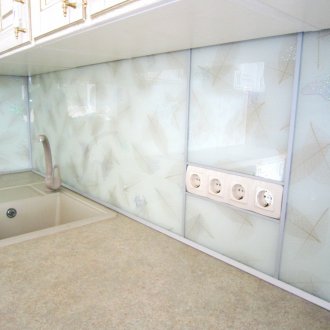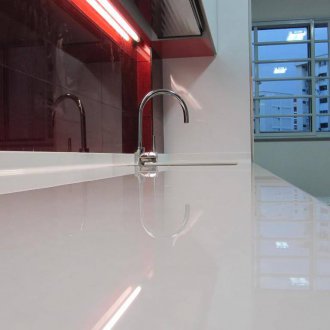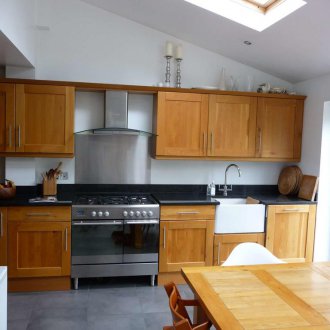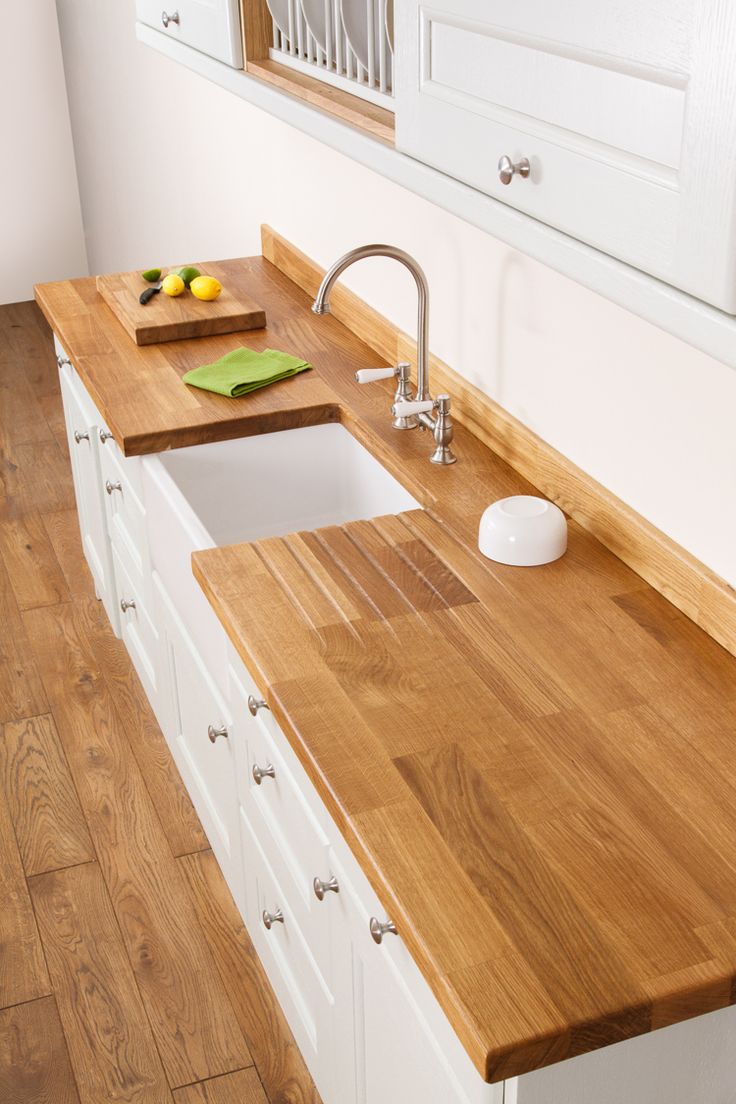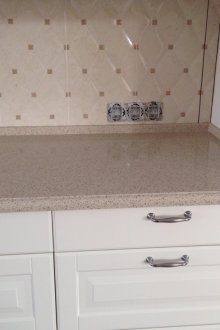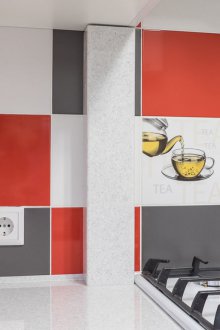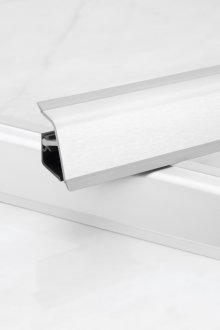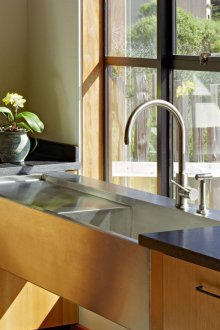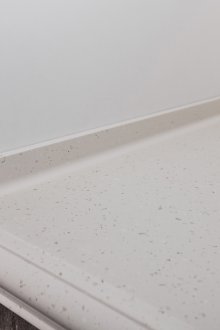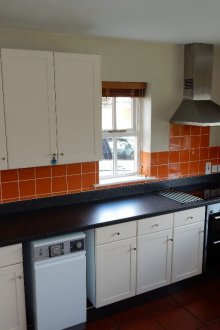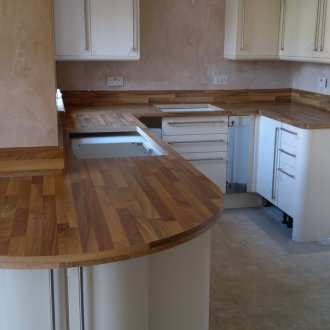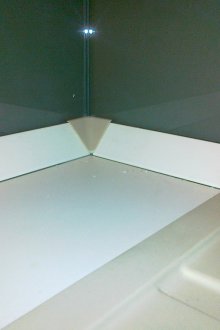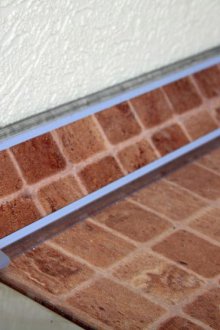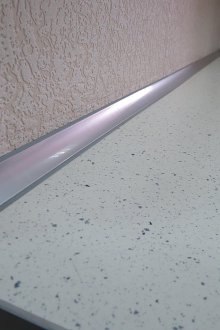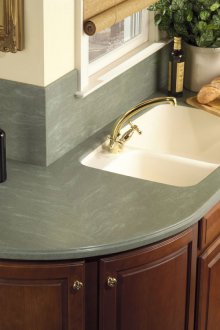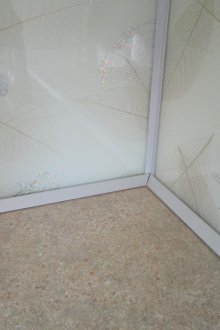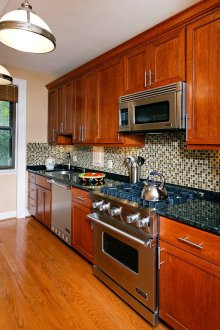Skirting board for the countertop - a stylish and functional kitchen decor (23 photos)
Content
The installation of the skirting board can be considered the most joyful event, because it means the end of the repair. This modest element of the interior performs several functions: protects the edge of the table from splashes and dirt, decorates the junction of the wall and countertops, participates in the creation of the kitchen design.
The standard skirting board for the kitchen countertop (wall edge) has a simple structure: a plastic guide (fixed to a wall or countertop) and a decorative plate. The decor is put on the guide and latched thanks to a special groove located in it. For aesthetic design of bends and corners, there are special plugs / corners that additionally ensure the integrity and tightness of the structure.
Manufacturers offer several options for skirting boards for the kitchen. Models differ in the material of manufacture, functionality.
To simplify the choice of product, you can follow the rule: the decorative strip is selected for the color and material of the countertop. Familiarity with the advantages and disadvantages of individual materials will help ensure that the right choice.
- Wooden furniture skirting board ideally looks with wood or chipboard worktops. Advantages of the material: environmental friendliness, aesthetic appearance, Disadvantages: careful care is required, detergents with abrasive additives cannot be used, high cost. For the manufacture of using different wood. Oak, maple, and cherry are considered more valuable. Democratic prices in conifers. Due to the possibility of tinting and painting, it is not difficult to choose an option for any table.
- Aluminum skirting board for the countertop can have a matte or shiny surface, with shades of silver, gold, bronze. The advantages of an aluminum profile are: strength, heat resistance, elastic edges (smooth out irregularities between the wall and the countertop), a reliable fit of the corners, the ability to arrange cables or wires inside, environmentally friendly material, simple installation, affordable price are ensured. There are two types of products: with a plastic strip (the best choice for a kitchen where the walls are not specially aligned), with an aluminum mounting strip (suitable for areas where there is a possibility of high temperatures). This is a great option for the design of countertops made of artificial stone.
- PVC skirting for countertops is very popular due to low prices, a variety of colors (including imitation of wood, stone, metal). Advantages of the product - it is easily mounted, resistant to moisture, is well washed, can be selected for any surface. The disadvantages of the plastic baseboard are its modest appearance (compared to stone or wood), and sensitivity to mechanical damage and high temperatures.
Thanks to a wide offer of manufacturers, it is easy to choose a product that is suitable for price, quality or appearance.
Aluminum kitchen skirting is best used to design a work area in the kitchen, due to the optimal ratio of price and quality.
Skirting board for the countertop: types and forms
The guideline for choosing a model is the distance between the countertop and the apron / wall.Installation is carried out in such a way that the slot closes completely and moisture and dust do not get behind the furniture.
Customers are offered products in the following forms:
- flat / thin;
- curly;
- rectangular;
- rounded
- triangular.
Manufacturers produce wall rails 3-5 meters long and with different cross-sectional parameters. You can find products with dimensions (height / width): 20x20 mm, 26x16 mm, 30x25 mm, 38x26 mm and 45x22 mm. Thanks to the variety of models, it is easier to choose a skirting board for a countertop, when installed, there will be less waste. For small rooms, it is better to purchase three-meter models. As a rule, many products are equipped with silicone seals, which increase the tightness of structures.
To create beautiful connections use additional elements (side plug, inner / outer corner). As a rule, they are made of durable plastic of a single color (white, black, gray and other shades).
Installing the baseboard on the countertop
There are two ways to fix the strap:
- the use of self-tapping screws allows you to change the skirting boards in case of need or simply at will. To do this, it is enough just to remove the screws and change the old parietal side to another;
- fixing to glue.
How to attach the baseboard to the countertop?
When buying a product and additional elements, it is important to accurately determine the number and type of corners and plugs. Before fixing the baseboard, the parameter of the bar is calculated in advance. To avoid unforeseen situations, it is better to buy bumpers with a margin of length.
Self-tapping
This method is recommended to be used for durable materials that will not be damaged by fasteners, so self-tapping screws are used for mounting wooden, metal sides.
Moreover, it is desirable to screw the guide to the wall and to the countertop. Due to this, there will be no gaps between the surfaces, which means that garbage will not accumulate under the side.
- The kitchen skirting board for the countertop is disconnected on the decorative strip and the guide.
- We measure the first section of the installation of the skirting board and cut off part of the guide of the desired length. Be sure to add 5 mm for mounting under the corner piece.
- We put the part in place of attachment and make holes in the wall, and then in the countertop. Between the holes, a step of 20-30 cm is maintained.
- Self-tapping screws are inserted into the holes and tightly twisted.
- The inner connecting corner is installed and then another piece of the guide is measured. Thus, a wall edge is mounted around the entire perimeter of the countertop.
- The decorative panel is attached and decorative caps are inserted.
To ensure the strength of the connection and to prevent liquid from entering the baseboard, it is advisable to use a sealant (along the connection line between the tabletop and the guide). This measure will protect the countertop and maintain the mobility of the furniture. Since, if necessary, it will be enough to remove the decorative strip and unscrew the screws from the wall.
Mounting the baseboard on glue
For work you will need: glue (sealant), tape measure, composition, degreasing surface.
- Before installing the skirting board, the surfaces are thoroughly cleaned of dust and dirt, and then degreased.
- The skirting board for the countertop is separated into parts - a decorative strip and a guide.
- Using a tape measure, measure the length of the table surface from edge to corner. The base of the baseboard is cut to the required length.
- Glue-sealant spreads on those sections of the guide that will fit on the apron / wall and countertop. This is important in order to prevent dirt, grease and water from getting under the baseboard.
- A guide is applied to the installation site and pressed tightly. To ensure a strong connection, it is necessary to withstand the drying time of the adhesive specified by the manufacturer.
- A connecting element is installed - a corner.Then cut off the next part of the guide, which also adheres to the wall / countertop.
- The decorative panel of the required length is measured (taking into account the margin of 5 mm that is needed for fastening), starts under the attached corner connection and clicks. In this way, the decor panel is mounted along the entire length of the guide.
- The final stage is the installation of end caps.
When fixing the baseboard with glue, it must be taken into account that the use of sealant eliminates the possibility of easily removing the wall edge. And therefore, it will not be possible to move the table quickly if necessary.
When choosing a skirting board, it is also advisable to consider the design of the kitchen. The figured white skirting board for the countertops is suitable for the Provence-style kitchen interior, and the products of flat and rectangular shapes complement the high-tech style and minimalism. The most popular is a triangular side, as it reliably isolates the space between the wall / apron and the countertop. On narrow slots, you can install a rectangular wall edge that looks original and non-standard.

